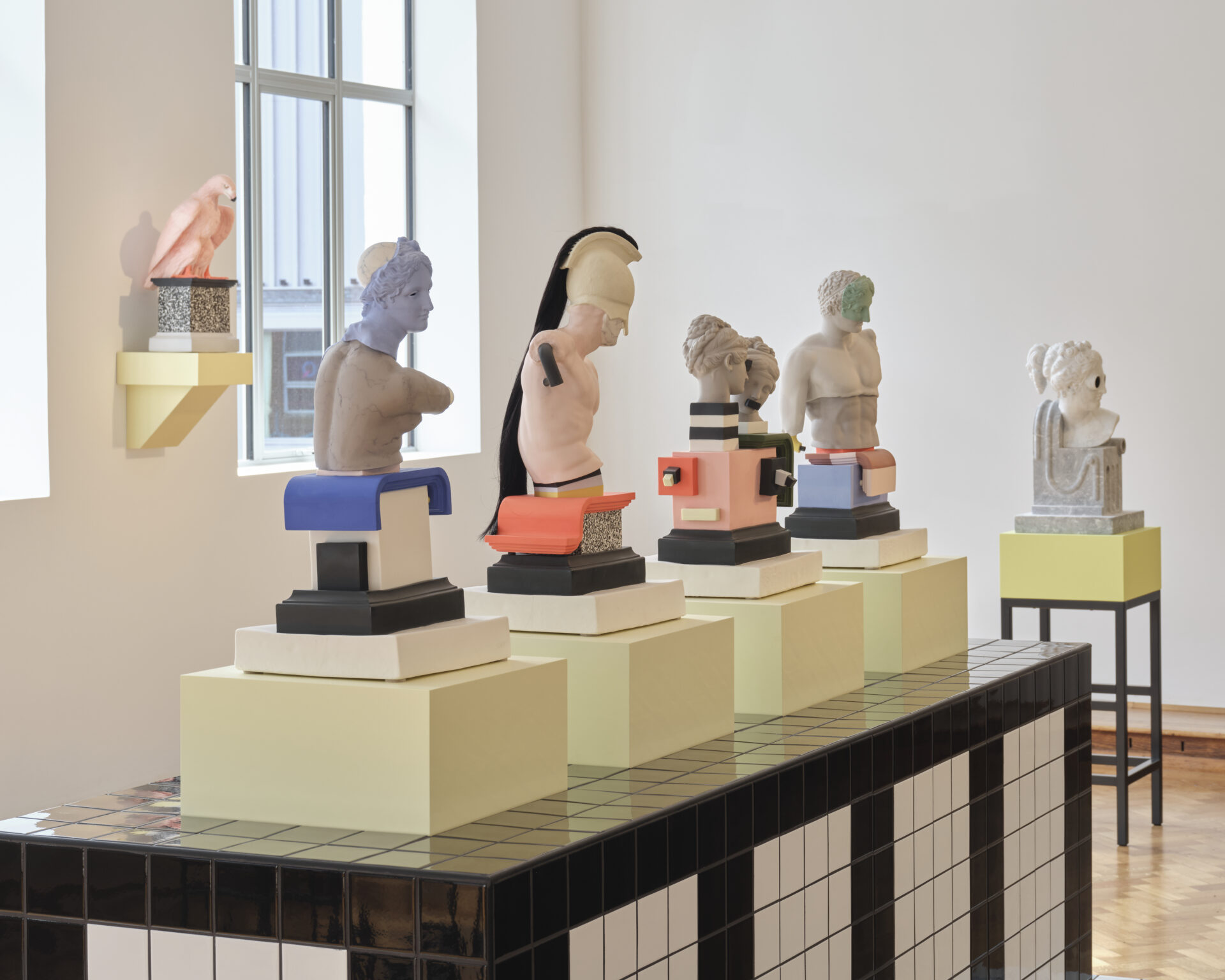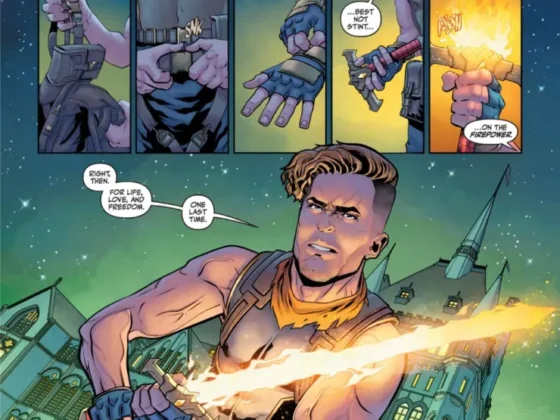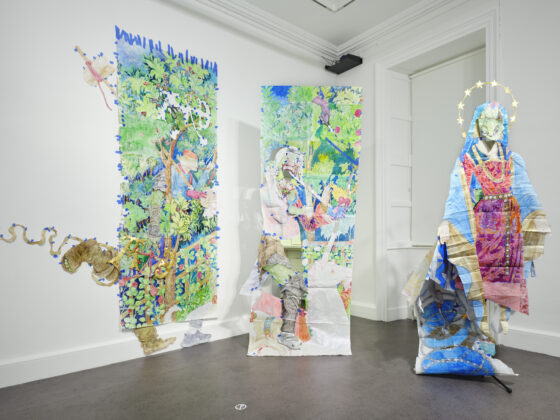Golden Thread Gallery
12 April – 7 June 2025
There is a scene in The Brutalist (2024) that is set in the quarries of Carrara, an awe-inspiring and sepulchral landscape of mountain scrub, interspersed with stark faces of cut white stone. A wealthy patron is taken there to choose a piece of the eponymous white marble, extracted continuously since antiquity – only Carrara will do. It is a place that Belfast-based sculptor, John Rainey, now knows well, a ‘wild’ part of Italy he had not experienced before undertaking a Digital Stone Project residency in Gramolazzo, during which he created Oculus Venus (2023). This artwork features in Rainey’s solo exhibition, ‘Decoys & Ghosts’ at Golden Thread Gallery, Belfast, alongside other sculptures, made over the past five years.
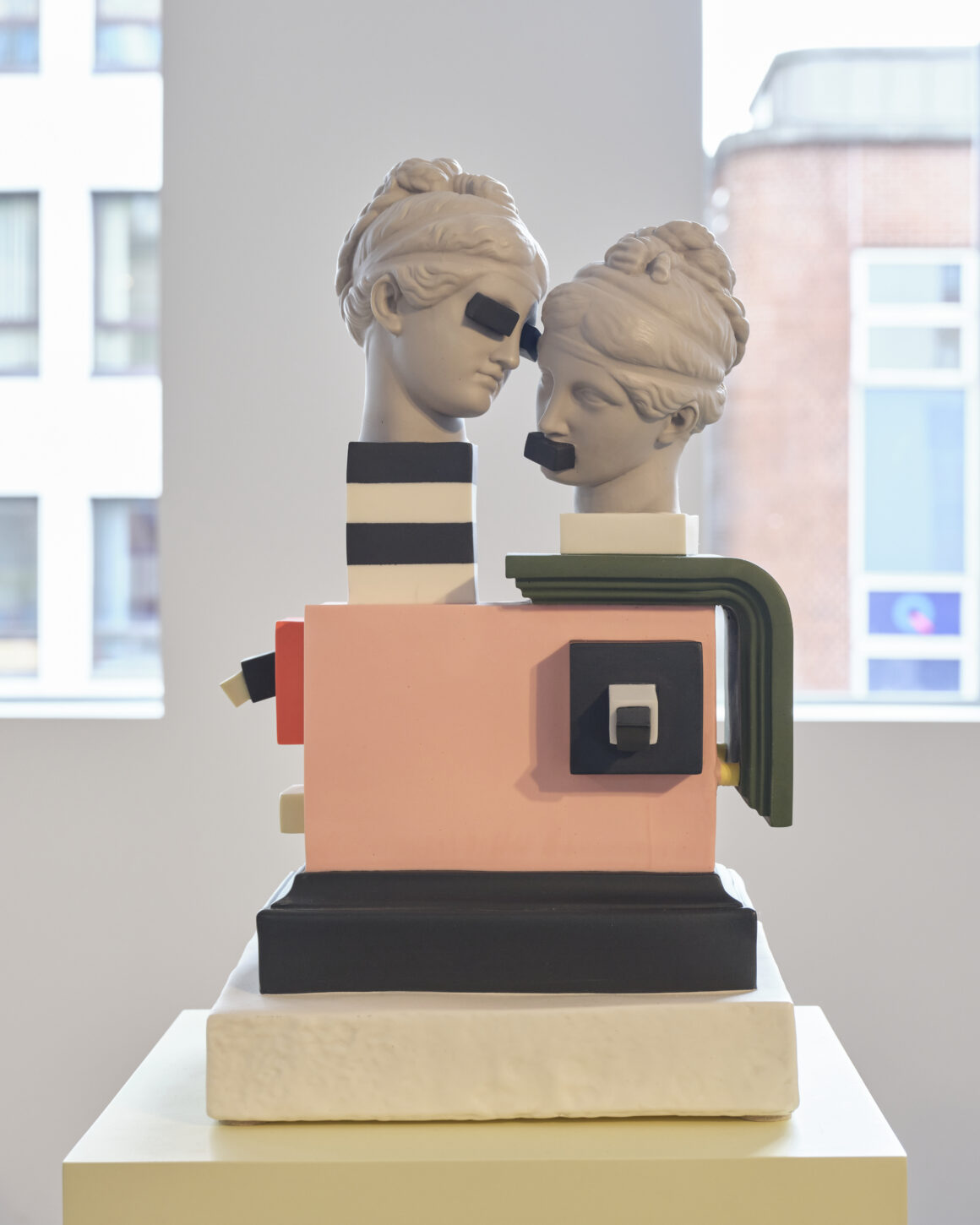
Oculus Venus is unique in being the only piece made from actual marble. Other works are slip-cast in Parian porcelain, a nineteenth-century technique developed to imitate the white marble of antique statuary – ironic, since we now know that many classical statues were painted. Rainey plays with Parian’s flexibility to imitate (with pigment and decals) a wide range of materials, from marble to metal and plastic. The piece embodies many of the themes that permeate the wider body of work: classical figurative archetypes becoming architecture or animal and made strange with surrealistic interventions. An obvious reference point is the bust of Venus, the space around her eyes moulded into sockets in which two discs of black marble have been fixed to create goggles reminiscent of those worn during the Trinity nuclear test, suggesting a desire to watch but also to shield. Furthermore, it evokes Giorgio de Chirico’s painting, Premonitory Portrait of Apollinaire (1914), which embodies a similar collision of contemporary and classical worlds, with touches of surrealism. As with many of Rainey’s creations, the plinth or pedestal – here, fabricated in another type of marble with classical fluting – is an integral, and increasingly elaborate, component of the work.
Reimagined Discobolus Fragment (Calacatta Viola) (2024) is one of several iconic sculptural archetypes from which attributes like spears, or in this case, the discus, have been removed. The figure, in salmon pink with a skin-tight, marble-effect singlet, is missing its forearms, replaced with coral-coloured tubing that bends to indicate phantom elbows and wrists, one branching off to connect with the athlete’s bent knee. Like armatures or struts, or the leftover sprues from the lost wax casting method, these additions and substitutions seem to reference the works’ very construction, using the vernacular of sculpture and casting techniques. They also recall the neoclassical zeal to ‘restore’ pieces of classical sculpture, or struts used to support delicate areas of the plaster casts, so historically fetishised by art academies. These extraneous supports lend the works a sense of fragility which, coupled with the removal of the symbols of athleticism, question contemporary notions of masculinity or promote alternative versions of it.
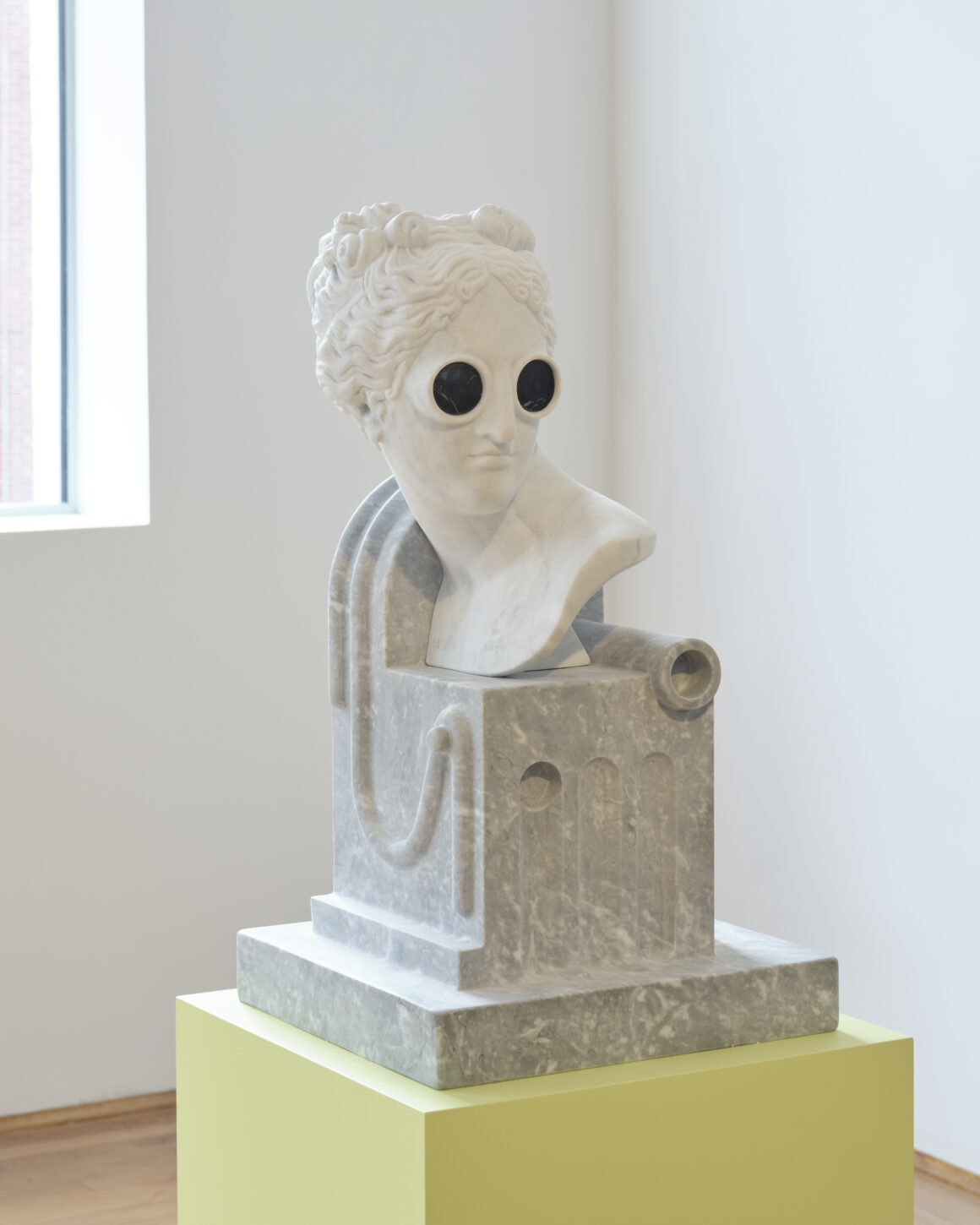
Different Peelings (Dazzle) (2025) references the Doryphoros or spear-bearer – a well-known Greek sculpture of classical antiquity by master sculptor, Polykleitos of Argos. In one of several doublings or pairings (acts of replication to which the exhibition title refers), two truncated figures appear in states of semi undress, peeling off second skins of black and white ‘dazzle paint patterns’ – the type used to camouflage naval ships in battle. In one extraordinary detail, we see, in the unpeeled skin, the figure’s face like an inverted silicone mould. It is yet another reference to production and reproduction, and to classical representations of flaying, such as the statue of Marsyas from the Capitoline Museums in Rome (1st–2nd century CE), but also to notions of hiding in plain sight, coding, and the masking of same-sex desire in a context of social conservatism.
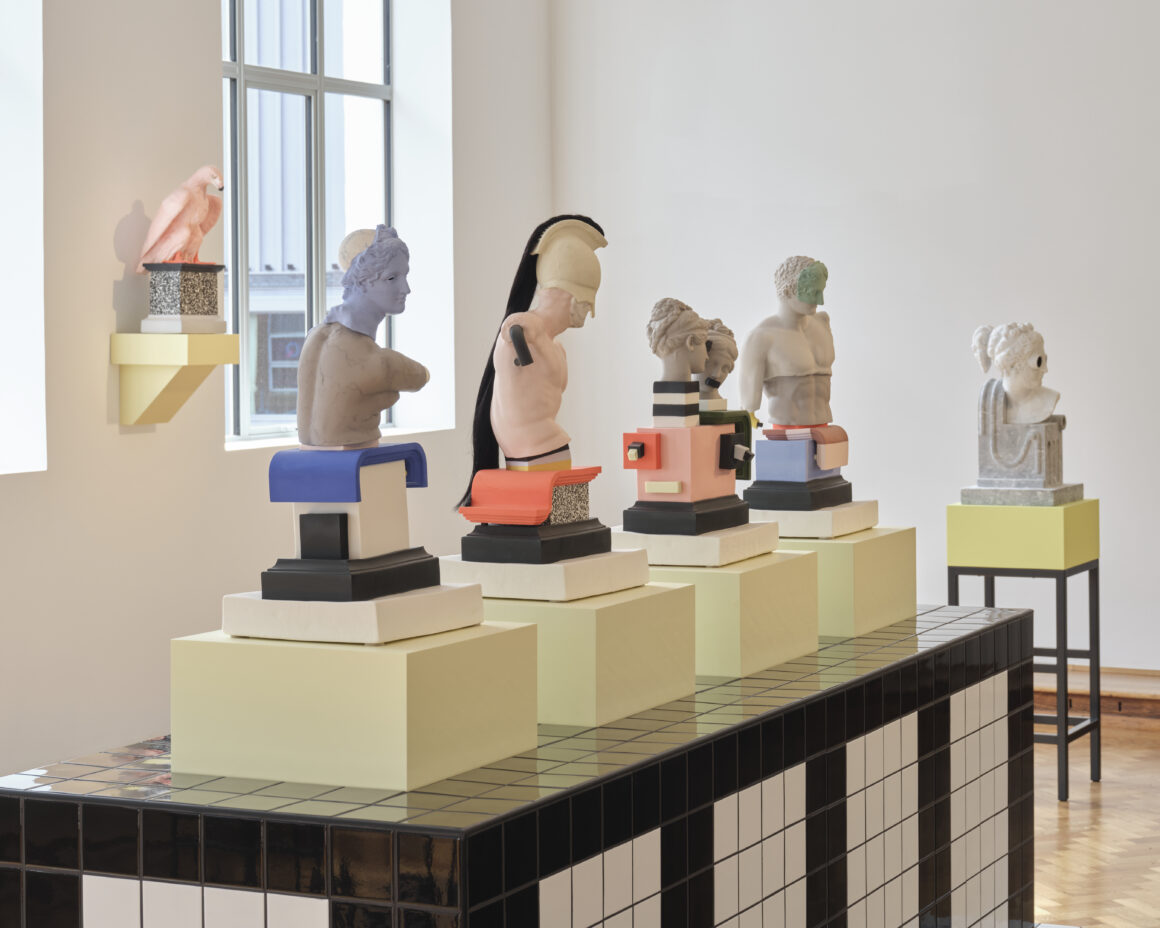
Highly refined in their execution, all of the exhibited pieces demonstrate the artist’s sheer mastery of craft. The show feels like an immersive and carefully guided experience; however, it is not without its moments of humour. In another double piece, The Deflatables (Travertine/Pink Marble) (2021), a pair of male busts face each other, protruding air valves marking their missing upper limbs. The figures, and indeed one of the pedestals, slump in states of deflation, the imagined air insufficient to fill their dented heads. Elsewhere, in Transtemporal Beings #1 (Composite Venus) (2025) – one of several works placed on a monumental, tiled plinth, Disobedient Tiling Plinth (2025) – a strategically positioned support props up a protruding female breast.
As the show unfolds, the complexity and mixing of forms increases, incorporating animals (horse and eagle heads and plumage), fused together like three-dimensional exquisite corpses. In Glitch Coupling (‘We Were Ghosts’) (2025) three pairs of figures based on the Belvedere Torso with Doryphoros heads and faintly blushing cheeks become ever more intimate, like lovers or exhausted boxers, their heads ballooning disproportionately, the struts and handles linking them in evermore pronounced or even cruel ways. They are beautiful and unsettling, not unlike the rugged mountain quarries above Carrara.
Jonathan Brennan is an artist based in Belfast.
jonathanbrennanart.com

